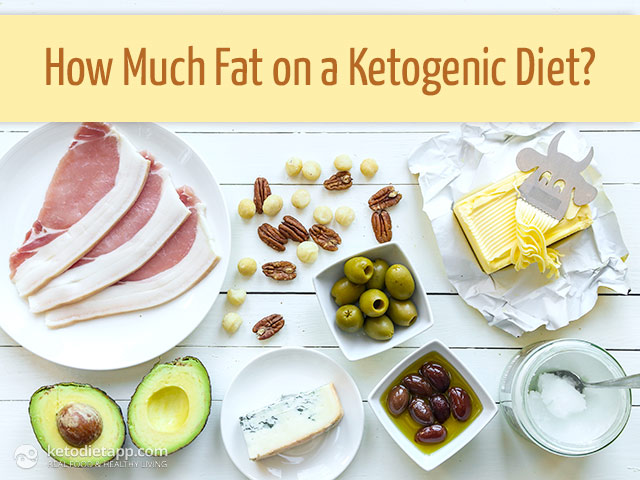We do not endorse non-Cleveland Clinic products or services.
Daily Fat Intake
Fat and Calories Low-fat foods are only one component of weight loss. Overview Resources. What's the difference between fat and calories? Fat is one of six nutrients your body needs to stay healthy. The other five nutrients are: Carbohydrates found in fruits, vegetables, pasta, rice, grains, peas, beans, and other legumes Proteins found in meat, poultry, dairy products, eggs, and beans Minerals such as potassium, calcium, and iron Vitamins such as vitamins A, D, E, and K Water Of these six nutrients, carbohydrates, protein and fats provide calories.
Why does fat get much attention?
How Much Fat on a Ketogenic Diet? | KetoDiet Blog
Fat gets much of the attention for many good reasons. High total cholesterol or a high LDL cholesterol level is a leading risk factor for heart disease. Some fatty foods such as bacon, sausage, and potato chips often have higher calories with fewer vitamins and minerals than low-fat other foods. Note: Protein sources, especially red meat and dairy products, contain saturated fat.
Good, low-fat sources of protein include lean meat, fish, poultry without skin, beans, lentils, tofu, fat-free or low-fat yogurt, milk, and cottage cheese. Fat has more than twice as many calories per gram as carbohydrates and proteins. A gram of fat has about 9 calories, while a gram of carbohydrate or protein has about 4 calories. In other words, you could eat twice as much carbohydrates or proteins as fat for the same amount of calories. Will I lose weight if I eat low-fat foods?
How much fat should I eat? How can I know how much fat I am eating?
Read nutrition labels on food packages. Nutrition labels show the number of grams of fat per serving. Food labels also show the daily percentage of fat provided in each serving.
- can drinking a gallon of water a day make you lose weight;
- Cleveland Clinic Menu.
- Top Navigation.
- 11 High-Fat Foods a Healthy Diet Should Always Include!
- Profile Menu.
- How many grams of fat can I eat in a day? | HowStuffWorks.
Consume higher-fat foods in moderate amounts to keep calories under control if you are trying to lose weight. The fat content of foods can be found online and with the use of apps and in fat and calorie-counting books. If you eat this many calories daily: 1, ; Eat no more than this many fat grams daily: 47 If you eat this many calories daily: 1, ; Eat no more than this many fat grams daily: 58 If you eat this many calories daily: 1, ; Eat no more than this many fat grams daily: 70 If you eat this many calories daily: 2, ; Eat no more than this many fat grams daily: 78 If you eat this many calories daily: 2, ; Eat no more than this many fat grams daily: 86 If you eat this many calories daily: 2, ; Eat no more than this many fat grams daily: 97 Label claims Some food labels make claims such as "low cholesterol" or "low-fat.
Here are some meanings: Label claim : Fat-free or sugar-free; Definition per serving size : Less than 0. All oils contain calories and 14 grams of pure fat per tablespoon. Olive oil is available as extra-virgin, virgin, and just plain olive oil.
Extra-virgin comes from the first press of olives, and is typically the most expensive. It has a stronger flavor and more green color. Similiarly, virgin olive oil is made from pressing already crushed olives and is slightly more acidic. Plain olive oil has a higher smoke point that virgin and extra-virgin and can be used for cooking and baking too.
It has a lighter color and a milder flavor.
Fat and Calories
Like most other cheese, the calories are high. But because the flavor is so bold, a little goes a long way. Two tablespoons of grated Parmesan contain about 45 calories, 2 grams fat, and 2 grams saturated fat. These golden bronze seeds are small and flat with a slightly nutty flavor. You can find them whole or ground at the market.
One tablespoon of whole seeds contains 55 calories, 3 grams of fiber, and a nice amount of omega-3 fats. One ounce of green olives about 14 medium has around 40 calories, 4 grams of fat, and 1 gram of fiber. They are rich in vitamin A and E and copper.
The fat found in these babies is mostly heart healthy monounsatured fat, which has been shown to help fight inflammation. Olives are also rich in polyphenols, an antioxidant should to help decrease the risk of heart disease and contain cancer-fighting properties.
Salmon is an excellent source of vitamin A and protein. Fatty fish like salmon not only make you feel full, they help power your brain. If salmon is not your thing, you can get the same omega-3 fat benefits from other cold-water fish like tuna and sardines.

By To Amidor September 22, Save FB Tweet ellipsis More. Good fats found in almonds, avocado, dark chocolate, and these other healthy foods deliver a boatload of nutrients while keeping you full for longer, proving that fat is not the enemy! Start Slideshow. Image zoom. Credit: Corbis Images. Replay gallery.